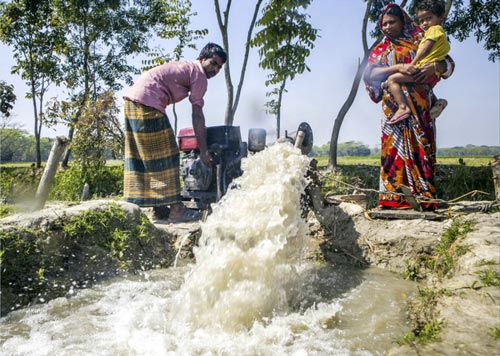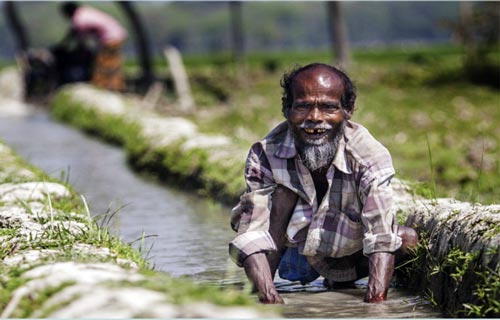The recent report “Groundwater Management in Bangladesh: An Analysis of Problems and Opportunities,” published by the Cereal Systems Initiative for South Asia – Mechanization and Irrigation (CSISA-MI) project, reveals that water resource policy in Bangladesh has focused largely on development and not enough on management, draining aquifers in intensively irrigated areas and sustaining expensive subsidies for dry-season irrigation pumping.

Unless water-use-efficient practices and policies are adapted and adopted, these challenges will become a serious threat to sustained agricultural growth in Bangladesh, according to Timothy Krupnik, CIMMYT agronomist and co-author in the study.
“Dry season rice production using irrigation helped Bangladesh to increase its total rice production from 18 million tons in 1991 to 33.8 million tons in 2013,” said Krupnik. “But this dramatic increase in rice production comes with costs – namely the high energy requirements to pump groundwater.”
Diesel pumps consume about 4.6 billion liters of diesel every year to lift groundwater for dry season rice production in Bangladesh, costing US $4 billion, in addition to U.S. $1.4 billion yearly of government energy subsidies for groundwater irrigation. These expenditures are unsustainable in the long-term, the report concludes, and counter to government policies to reduce energy subsidies and shift to cheaper, more energy-wise surface water irrigation.
The report highlights supply- and demand-side options for sustainable groundwater management. “Improving water-use efficiency through resource- conserving crop management practices such as direct-seeded rice and bed planting could help reduce groundwater demand from agriculture,” Krupnik said. “In surface water irrigated areas, farmers can use fuel-efficient axial flow pumps.” The CSISA-MI project is working with the private sector to help promote use of these pumps.

Water demand can also be reduced by rationalizing cropping patterns; for example, shifting from rice to more profitable crops like maize, according to Krupnik. Involvement of consumers, investment in improved water and agricultural technologies and support for farmers are needed.
Since the concept of “more water-more yield” is still prevalent among farmers, the report also emphasizes the need for policy and educational programs aimed at wise water use and volumetric water pricing. In addition to technical solutions, strong linkages and improved communications among organizations involved in groundwater management will be required.
 Innovations
Innovations